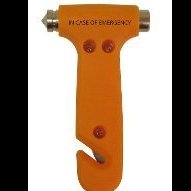Growing Cassava In Thailand
-
Recently Browsing 0 members
- No registered users viewing this page.
-
Topics
-
-
Popular Contributors
-
-
Latest posts...
-
154
Krungsri online banking discontinued from 1 October 2025
"you need to cancel your Krungsri-on-Line first because you can't have your mobile app registered whilst still registered for online banking". I have Online Banking for my KrugsriBiz Online and the app, so that argument seems like total BS. (I have KungsriBiz because about 3 years ago they said we couldn't have a joint account, which we've had for over 10 years. All accounts overseas are all joint accounts. Banking here is truly in the dark ages.) The less smart answer is that this notice from Krungsri came to some after they reached 70 years old, and were afforded Online Banking, now being summarily withdrawn. That is very disappointing news indeed, and completely ridiculous. It leaves the only option to a 70 year old of finding out their balance by either wasting a great deal of time dialling 1572 or going to an ATM to update a passbook, or to a branch to ask a teller to inform them of the balance, or to do a transaction. Hardly conducive to aging. -
2
UK Cambridge University Faces Backlash discriminating against white job seekers
This is DEI at its finest, and I heartedly approve! -
169
Will there ever be a safe vaccine?
When my parent went into a nursing home you realise there's this whole world of people who you don't often see. There's old and then there's nursing home old. -
22
Report Dutch Embassy Sale Sparks Debate in Bangkok
And the loss of another green space -
55
Report Drive Drunk, Lose Your Car: Thailand’s OAG Pushes Tough New Proposal
I just had my 9th bottle of Lao Khao. come get me -
22
Report Dutch Embassy Sale Sparks Debate in Bangkok
but virtually unaffordable by now. one of the reason to flee that country, people there are drowning in rules and laws. As for infrastructure there are fierce cuts, roads that are needed are not being made, bridges that need maintenance that too is being postponed.
-
-
Popular in The Pub



.thumb.jpeg.d2d19a66404642fd9ff62d6262fd153e.jpeg)







Recommended Posts
Create an account or sign in to comment
You need to be a member in order to leave a comment
Create an account
Sign up for a new account in our community. It's easy!
Register a new accountSign in
Already have an account? Sign in here.
Sign In Now